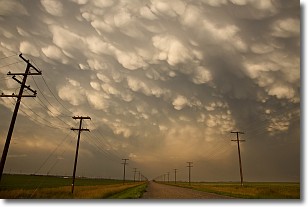Weather Alert in Alaska
Hydrologic Outlook issued May 8 at 10:59AM AKDT by NWS Fairbanks AK
AREAS AFFECTED: Dalton Highway Summits; Central Interior
DESCRIPTION: ESFAFG The Yukon River at Ft. Yukon broke up Tuesday with minor flooding from an ice jam that released overnight into Wednesday morning. The breakup front remained stalled at 6 Mile Island below Ft. Yukon as of early Wednesday afternoon while water levels have continued to drop at Ft. Yukon. The water that has been carrying the breakup front has continued downstream and is helping to lift and shift the ice between Ft. Yukon and Beaver; however without a pulse of water from upstream breakup may be slowed for a few days. The timing of the breakup front reaching Stevens Village and the Dalton Highway bridge could be anywhere from 1-5 days. The River Watch team plans one more flight to this reach on Thursday to monitor the progression and will provide updates as information becomes available.
INSTRUCTION: N/A
Want more detail? Get the Complete 7 Day and Night Detailed Forecast!
Current U.S. National Radar--Current
The Current National Weather Radar is shown below with a UTC Time (subtract 5 hours from UTC to get Eastern Time).

National Weather Forecast--Current
The Current National Weather Forecast and National Weather Map are shown below.

National Weather Forecast for Tomorrow
Tomorrow National Weather Forecast and Tomorrow National Weather Map are show below.

North America Water Vapor (Moisture)
This map shows recent moisture content over North America. Bright and colored areas show high moisture (ie, clouds); brown indicates very little moisture present; black indicates no moisture.

Weather Topic: What are Mammatus Clouds?
Home - Education - Cloud Types - Mammatus Clouds
 Next Topic: Nimbostratus Clouds
Next Topic: Nimbostratus Clouds
A mammatus cloud is a cloud with a unique feature which resembles
a web of pouches hanging along the base of the cloud.
In the United States, mammatus clouds tend to form in the warmer months, commonly
in the Midwest and eastern regions.
While they usually form at the bottom of a cumulonimbis cloud, they can also form
under altostratus, altocumulus, stratocumulus, and cirrus clouds. Mammatus clouds
warn that severe weather is close.
Next Topic: Nimbostratus Clouds
Weather Topic: What is Precipitation?
Home - Education - Precipitation - Precipitation
 Next Topic: Rain
Next Topic: Rain
Precipitation can refer to many different forms of water that
may fall from clouds. Precipitation occurs after a cloud has become saturated to
the point where its water particles are more dense than the air below the cloud.
In most cases, precipitation will reach the ground, but it is not uncommon for
precipitation to evaporate before it reaches the earth's surface.
When precipitation evaporates before it contacts the ground it is called Virga.
Graupel, hail, sleet, rain, drizzle, and snow are forms of precipitation, but fog
and mist are not considered precipitation because the water vapor which
constitutes them isn't dense enough to fall to the ground.
Next Topic: Rain
Current conditions powered by WeatherAPI.com




